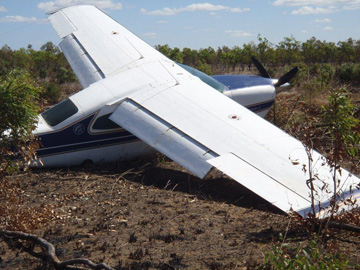
A go-around is always a viable option when pilots experience any problems during landing. The ATSB emphasised this point after a pilot, partially blinded by glare, opted to continue his landing, and as a result his aircraft departed the runway and travelled through two fences before coming to a stop.
The accident occurred on 23 August 2012, at Urapunga in the Northern Territory. The aircraft was a Cessna 210N, carrying the pilot and two passengers on a charter flight. While the aircraft was descending, the sun created a glare on the windscreen that greatly restricted visibility.
The pilot was wearing non-polarised sunglasses, which helped only slightly. The aircraft’s sun visors were not effective because the sun was low on the horizon. Nevertheless, the pilot thought he could identify the runway through the glare and saw what he thought was the runway centreline, so he continued his approach.
The pilot reported intermittent
sun glare during descent...
As the aircraft floated down above the runway, the pilot was unsure of the amount of runway that had been used. The aircraft touched down and the pilot applied heavy breaking in short bursts. The aircraft slowed a little on the runway’s gravel surface before leaving the end of the runway, and travelling through two fences.
The aircraft came to rest on the right side of the fuselage, right wing and right horizontal stabiliser. The pilot received minor injuries from barbed wire while he was evacuating from the aircraft.
There are several studies by the US Federal Aviation Administration and the ATSB on overruns and the value of being prepared to go around.
Links to those studies and related briefing notes can be found in the investigation report, AO-2012-107.


